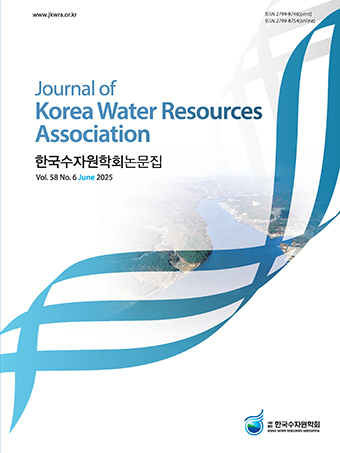Research Article
Abstract
References
Information
- Publisher :KOREA WATER RESOURECES ASSOCIATION
- Publisher(Ko) :한국수자원학회
- Journal Title :Journal of Korea Water Resources Association
- Journal Title(Ko) :한국수자원학회 논문집
- Volume : 53
- No :4
- Pages :313-322
- Received Date : 2020-03-30
- Revised Date : 2020-04-07
- Accepted Date : 2020-04-07
- DOI :https://doi.org/10.3741/JKWRA.2020.53.4.313




 Journal of Korea Water Resources Association
Journal of Korea Water Resources Association










